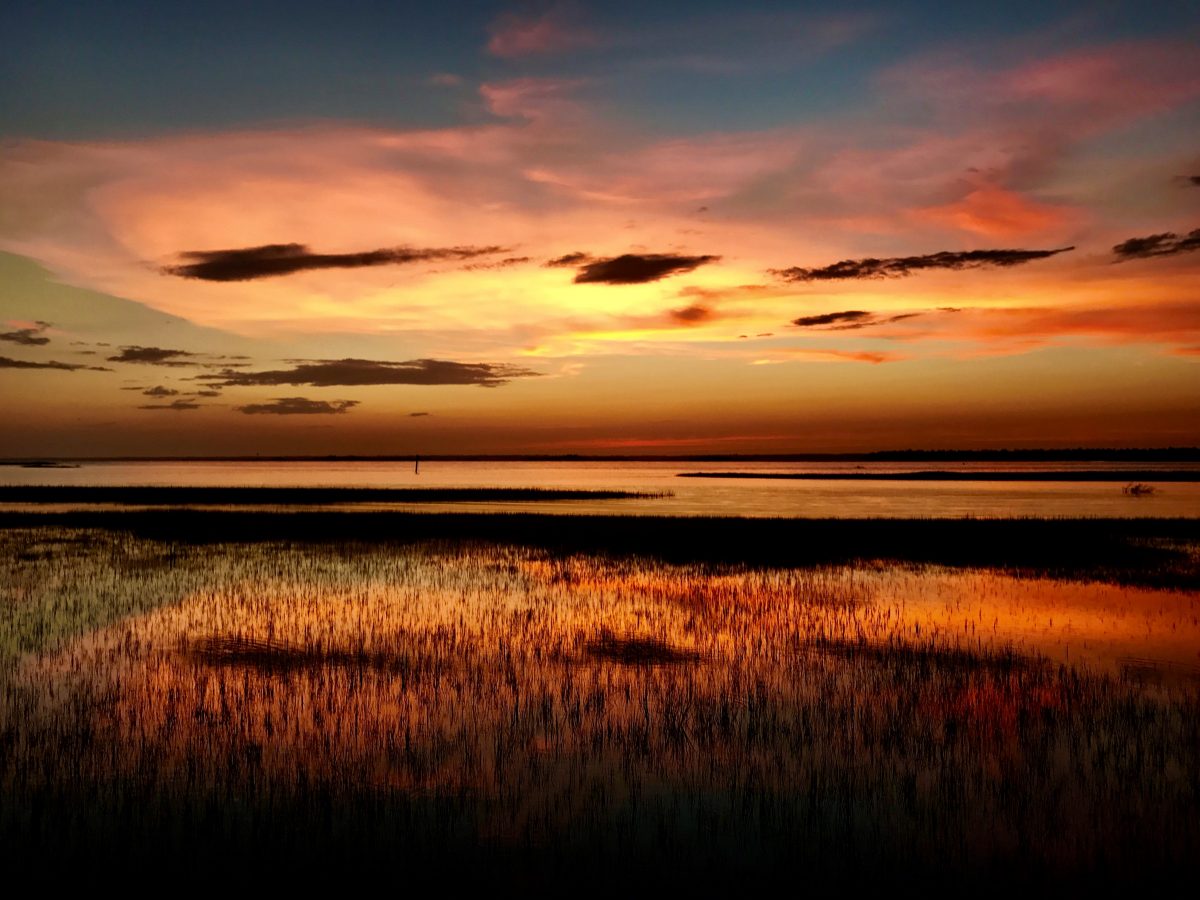
Guest commentary
June 8 is World Oceans Day, a global commemoration to foster ways we can better conserve and manage oceans and all they provide: our beaches and the family memories we create on them; recreational opportunities, such as fishing, sailing, and whale-watching; and our coastal economies, which thrive by supporting those recreational activities and harvesting and selling seafood.
As the co-owner of Locals Seafood, for me it’s a day to think about the ocean’s bounty and the opportunities it provides to my family, allowing us to proudly make our living selling a fresh and local product. While the global goal of this year’s World Oceans Day is to work toward protecting at least 30% of our “blue planet” by 2030, my interest is local, specifically on North Carolina’s seagrasses. Often overlooked and underappreciated, seagrasses are not just a picturesque element of our coastal ecosystems; they serve as a barometer for the overall health of our estuarine systems and the foundation of our entire coastal economy.
Supporter Spotlight
The Tar Heel State has about 120,000 acres of seagrass habitats hugging our barrier islands and enriching estuaries along the coast, more than any other state on the Eastern Seaboard. Unfortunately, in North Carolina and beyond, seagrass faces a troubling decline.

Seagrass beds provide food, refuge and nurseries for more than 75% of our marine life, including the shrimp, blue crabs and finfish so important to my business and our coastal economy. These underwater meadows also act as vital carbon sinks, capturing equivalent amounts of carbon to what’s stored by 80,000 acres of forests, and improve water quality by absorbing excess nutrients and reducing sedimentation, ensuring optimal conditions for the growth and survival of marine life. The intricate relationship between seagrass and our most important marine species highlights the importance of protecting and conserving seagrass habitats for the sustainable management of our fisheries, shellfish industry, and overall coastal economy.
But seagrasses are threatened by the same climate change-driven phenomenon they can help us overcome. Our more frequent and severe coastal storms can rip through the beds, causing damage that can take years to regenerate. Seagrass beds rarely are found in more than 6 feet of water because they require sunlight to thrive, but if the water is clouded by sediment or pollutants, they can’t get enough light to grow. Rising water temperatures, which promote the growth of light-distorting algae, and poor water quality threaten seagrasses.
Polluted runoff also poses a significant threat to seagrass habitats. As a seafood dealer driving between the Triangle and the coast, I see firsthand the sources of nonpoint pollution causing nutrient and sediment-laden runoff into our coastal estuaries. Various land uses introduce excessive nutrients into our delicate estuarine ecosystems by carrying fertilizers and sediment into nearby water bodies, where they fuel the growth of harmful algae blooms and smother seagrass beds, ultimately leading to their demise.
The Earth is losing the equivalent of two football fields of seagrasses every hour, and while North Carolina’s seagrass population is faring a bit better, it’s still declining at an estimated 1% to 2% annually.
Supporter Spotlight
“Nowhere are we seeing increases in seagrasses in North Carolina,” said Jud Kenworthy, a retired scientist with the National Oceanic and Atmospheric Administration in Beaufort, and an adjunct professor at the University of North Carolina Wilmington, told Carolina Public Press in 2021. “And one thing is clear: If you don’t have seagrass, you’re going to lose fisheries.”
Seagrass loss is a clear symptom of more significant issues plaguing our coastal regions. These losses act as an alarming warning sign, highlighting the degradation and imbalance within our delicate ecosystems.
Fortunately, there are simple yet impactful actions that make a positive difference. Sustainable alternatives to traditional lawn fertilizers can help significantly improve water quality. Recreational fishers and boaters can play a role by reducing boat wakes and preventing propeller scarring, which can disturb and uproot seagrass. And to make a lasting impact, we must support and strengthen state efforts to protect the clarity of our waters.
Our state has already taken steps to conserve its seagrass beds. In late 2021, the North Carolina Marine Fisheries Commission updated its Coastal Habitat Protection Plan (CHPP), a blueprint to protect and restore seagrasses and other estuarine habitats. It provides specific direction to state commissions and agencies, and identifies ways that towns, organizations, businesses, and even individuals can help protect and restore coastal habitats.
World Oceans Day gives us an opportunity to both appreciate the progress North Carolinians have made and to also assess the work we still must do to keep our communities economically strong and environmentally resilient.
To stimulate discussion and debate, Coastal Review welcomes differing viewpoints on topical coastal issues. See our guidelines for submitting guest columns. Opinions expressed by the authors are not necessarily those of Coastal Review or our publisher, the North Carolina Coastal Federation.







